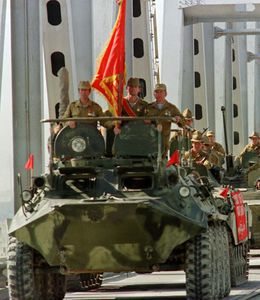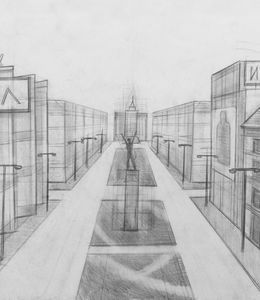Vera and Donald Blinken Open Society Archives
2017
Gaudiopolis or 'The City of Joy' was a children's republic, founded in the postwar years in Budapest by a Lutheran Pastor Gábor Sztehlo. In the aftermath of WW II, hundreds of children had to face the trauma of losing their parents or homes. Gaudiopolis provided a shelter for these children and a place where they had the opportunity „to become independent and confident citizens, familiar with practial matters and trained in theoretical issues, striving for a better self-recognition and self-criticism". A realized utopia, it functioned in the spirit of hope, trust, compassion, generosity, responsibility, perseverance, courage, and care until it was nationalized by the communist regime in 1950. The story of the Children's Republic was immortalized in the film Somewhere in Europe (1948, dir. Géza Radványi), in which many of the children...
The Soviet intervention in Afghanistan unleashed the last major international armed conflict of the Cold War period. Paradoxically, Afghanistan had never been a central area of the Cold War before the outbreak of the conflict. In the 1960s and 1970s, both the Western world and the Soviet bloc regarded the country as a neutral buffer state where they had only limited interests: sustaining political order and keeping the rival side at a safe distance.
However, the overthrow of royal rule in 1973 and the Communist takeover that followed, after a chaotic interim period, in 1978 shook the political stability of Afghanistan. At the same time, General Zia-ul-Haq`s coup d`état in Pakistan in 1977 and the Iranian Islamic revolution of 1978 upset the former balance of power in the region.
The communist coup d’état in Afghanistan and...
The exhibition features artists, filmmakers and groups from across Africa, Asia, Europe and North America. Drawing on film, photography, propaganda, and public art, the exhibition presents interdisciplinary reflections on African connections to the Soviet Union and related countries.
The title of the exhibition is borrowed from Chinua Achebe’s 1958 classic of post-colonial fiction, seen by many as the archetypal modern African novel in English which reflects on the devastating impact of colonialism in Africa. Our exhibition uses this association to focus on a similar loss of utopian perspective following the end of the cold war and collapse of the Soviet Union and eastern bloc.
The exhibition presents historical and contemporary responses to the geopolitical and cultural connections...
The “sickle and hammer”, or the “red star” are still well-known Communist symbols, but how can we read other images, like “Sun”, or “book” in the context of Communist imagery? In 1974, art historian Nóra Aradi, the omnipotent guardian of Socialist Realism in Hungary, published a book entitled The Symbols of Socialist Art that, a quarter century after the fall of Communism, may also serve as a visual aid, a tool in translating the past to newer generations who were born after 1989. With the help of contemporary artists from the Central and Eastern European region, the exhibition The Symbols of Socialist Art explores and critically re-evaluates this visual dictionary, while also investigating the role of its author in the making of the art history of the 2nd half of the 20th century in Hungary. Meghívott művészek / Invited artists: Erik...





